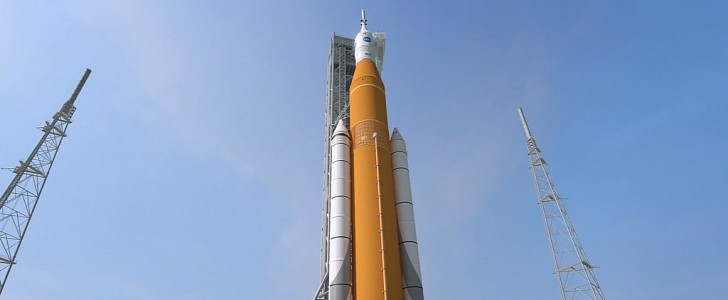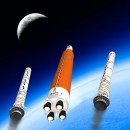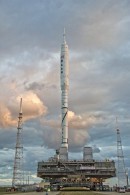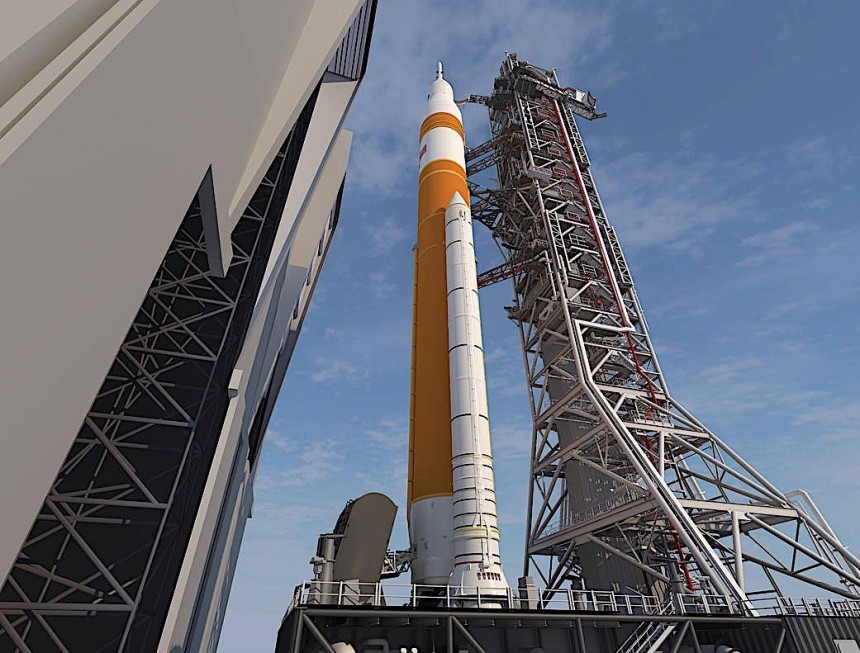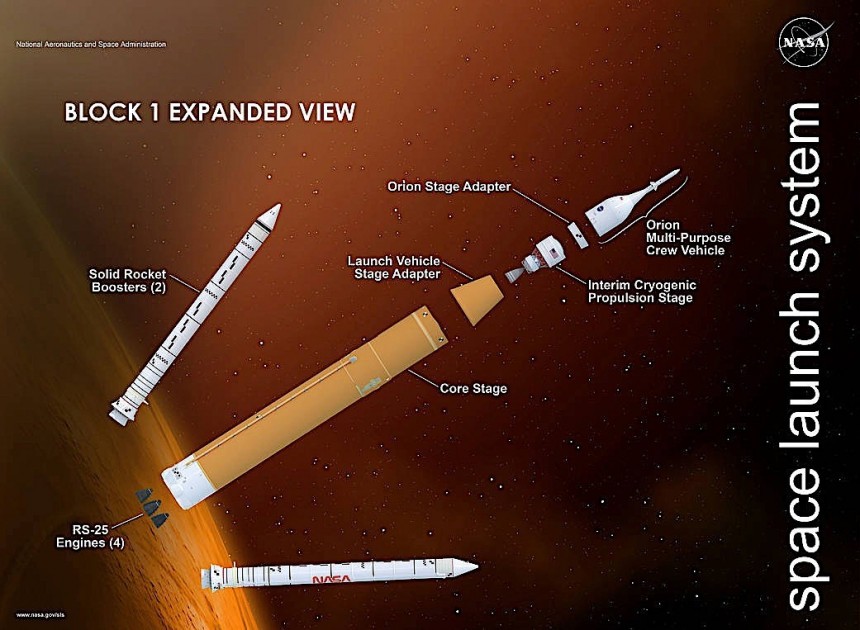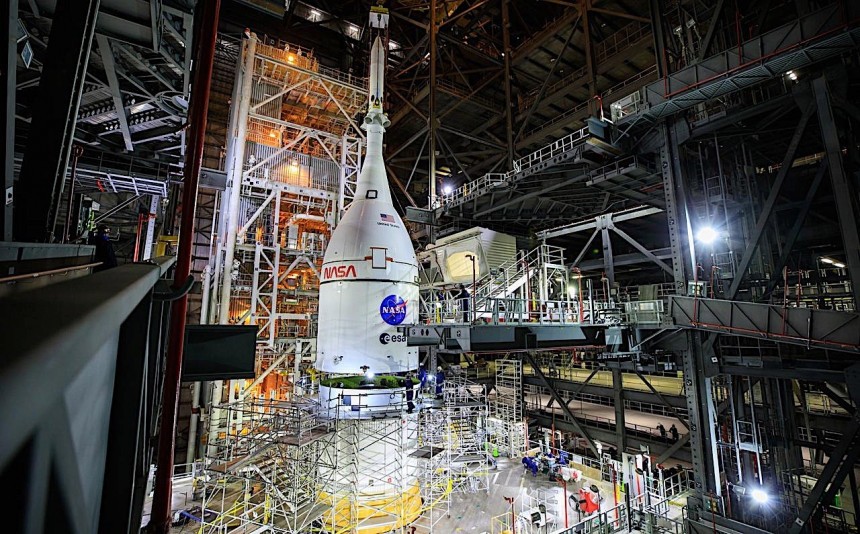If you're a person with eyes glued to the stars but weren't fortunate enough to be around for the first moon landing, you're on the precipice of your dreams becoming a wondrous reality.
All thanks to NASA's Artemis program, the first significant attempt at a manned landing on the surface of another heavenly body in half a century. Today, let's take a deep dive into the mission NASA promises is on the cusp of re-igniting the space race. Along the way, we'll discover that its creation was never guaranteed.
Announced in 2017, the Artemis Program is an initiative rewriting the playbook for manned beyond Earth exploration. But as much as it's a historical feat of engineering, it's also a bureaucratic miracle that almost didn't make it out of the prototype phase.
Before the Artemis program, a slew of different proposals for NASA's next-generation manned space exploration program came and went from their administration. All but one failed to materialize much more than a few neat-looking CGI promo art pieces.
Only a single proposal, dubbed project Constellation, produced anything more. These exceedingly rare tangible results in manned spaceflight came in the form of the Ares I and V launch vehicles, as well as the Lockheed Martin-Airbus Orion Multi-Purpose Crew Vehicle.
Using its American-built Command Module and ESA manufactured Service Module, the Orion capsule was designed to be capable of short and long-term lunar excursions and possibly voyages to worlds beyond. A very basic boilerplate variant called the Ares I-X was even launch tested at the Kennedy Space Center launchpad 39B on October 28, 2009.
Had the Obama administration not canceled the Constellation program outright, it could have ferried the state-of-the-art Lockheed Martin-Airbus Orion Space Capsule into a translunar orbital mission similar to the Apollo 8 mission as early as 2019.
This potentially puts the program on a trajectory for the first manned lunar landing mission since 1972 as soon as this year. Alas, it wasn't to be. But from the rib of the now-defunct Constellation program, the foundations of Artemis would be born. Not before six years of work between 2011 and 2017 in a herculean effort to keep NASA's hopes of a new age of Lunar exploration from vanishing once again.
NASA ultimately pulled it off by reorganizing the existing Constellation infrastructure into a new, more streamlined program with a new rocket dubbed the Space Launch System (SLS) and receiving its new Greek-derived project name soon after. In Greek mythology, the mighty Artemis, goddess of wild animals, vegetation, and fertility, was the twin sister of Apollo, god of archery, music and dance, truth and prophecy.
Hence, when you break down the Apollo and Artemis programs into their basic components, you can't help but find a strikingly profound parity. As with Apollo, Artemis would be nothing without the solid foundation of a well-sorted booster rocket. The first example of this 98.1-meter (322.0-foot) tall SLS Block-I rocket is rivaled only by the Apollo Program's Saturn V rocket in terms of power and scale.
The Soviet N1 rocket may also have been in the same ballpark, but that was an elaborate bomb more so than a functioning rocket. The SLS launch vehicle consists of three stages, an exploration upper stage, two solid rocket boosters took right from the Space Shuttle program, and a massive core stage that holds the rocket's main fuel tank, also derived from Shuttle service.
There's also a handy launch abort system ready to whisk astronauts away from the rocket in the event of an emergency. With quad Aerojet-Rocketdyne RS-25 rocket engines in its core stage, SLS Blocks I and II are expected to deliver 8.8 million pounds-force (4 million kgf) of thrust at launch from Cape Canaveral, Florida.
That's a full 15% more power than Saturn V's 7.5 million pounds (3.4 million kg) or the Space Shuttle's, 7.8 million pounds-force (3.5 million kgf). This figure should be enough power to hopefully exceed Saturn V's max orbital payload of 129,300 kg (285,000 lb)
Perhaps the biggest difference between the Saturn V and SLS Block I is that the former had to haul both a Lunar Excursion Module (LEM) and a full command module to the moon on its own. With the Artemis Program, the honus for this task is put on a different spacecraft entirely, the Gateway Lunar Station.
Once launched in 2024, this small space station will stay parked in lunar orbit. Here, it will stow away an integrated LEM-type vehicle that astronauts can use to make the short but treacherous jaunt down to the lunar surface in a process NASA calls "Pre-Staging." Although, recent reports have brought the requirement of such an advanced space station into question. Leading us to infer that SLS and Orion are capable of transporting a Lunar Module type vehicle within their own storage if need be or will be accessible by other means.
For the first time in history, it's possible the first person to step foot on the lunar surface on this day might not be an American national. NASA has agreed to fly one Canadian astronaut aside from an American team of three for Artemis II, the first human-crewed journey to Lunar orbit since Apollo 13. On top of all of this, we've yet to discuss SpaceX's StarShip HLS and the role it seems ready to fill in the Artemis Program beginning with the third launch in 2025.
In fact, a litany of different companies and agencies from across the globe are deeply involved with the ins and outs of Project Artemis. Not the least of which is a recently announced deal from Collins Aerospace to supply the EVA suits NASA plans to use to set the American flag back down on the moon five-plus decades post-Apollo.
The mission is slated to be the first manned lunar landing since Apollo 17 in 1972. This time, however, we can anticipate going there to stay, and from there, the stars beyond.
Announced in 2017, the Artemis Program is an initiative rewriting the playbook for manned beyond Earth exploration. But as much as it's a historical feat of engineering, it's also a bureaucratic miracle that almost didn't make it out of the prototype phase.
Before the Artemis program, a slew of different proposals for NASA's next-generation manned space exploration program came and went from their administration. All but one failed to materialize much more than a few neat-looking CGI promo art pieces.
Only a single proposal, dubbed project Constellation, produced anything more. These exceedingly rare tangible results in manned spaceflight came in the form of the Ares I and V launch vehicles, as well as the Lockheed Martin-Airbus Orion Multi-Purpose Crew Vehicle.
Had the Obama administration not canceled the Constellation program outright, it could have ferried the state-of-the-art Lockheed Martin-Airbus Orion Space Capsule into a translunar orbital mission similar to the Apollo 8 mission as early as 2019.
This potentially puts the program on a trajectory for the first manned lunar landing mission since 1972 as soon as this year. Alas, it wasn't to be. But from the rib of the now-defunct Constellation program, the foundations of Artemis would be born. Not before six years of work between 2011 and 2017 in a herculean effort to keep NASA's hopes of a new age of Lunar exploration from vanishing once again.
NASA ultimately pulled it off by reorganizing the existing Constellation infrastructure into a new, more streamlined program with a new rocket dubbed the Space Launch System (SLS) and receiving its new Greek-derived project name soon after. In Greek mythology, the mighty Artemis, goddess of wild animals, vegetation, and fertility, was the twin sister of Apollo, god of archery, music and dance, truth and prophecy.
The Soviet N1 rocket may also have been in the same ballpark, but that was an elaborate bomb more so than a functioning rocket. The SLS launch vehicle consists of three stages, an exploration upper stage, two solid rocket boosters took right from the Space Shuttle program, and a massive core stage that holds the rocket's main fuel tank, also derived from Shuttle service.
There's also a handy launch abort system ready to whisk astronauts away from the rocket in the event of an emergency. With quad Aerojet-Rocketdyne RS-25 rocket engines in its core stage, SLS Blocks I and II are expected to deliver 8.8 million pounds-force (4 million kgf) of thrust at launch from Cape Canaveral, Florida.
That's a full 15% more power than Saturn V's 7.5 million pounds (3.4 million kg) or the Space Shuttle's, 7.8 million pounds-force (3.5 million kgf). This figure should be enough power to hopefully exceed Saturn V's max orbital payload of 129,300 kg (285,000 lb)
Once launched in 2024, this small space station will stay parked in lunar orbit. Here, it will stow away an integrated LEM-type vehicle that astronauts can use to make the short but treacherous jaunt down to the lunar surface in a process NASA calls "Pre-Staging." Although, recent reports have brought the requirement of such an advanced space station into question. Leading us to infer that SLS and Orion are capable of transporting a Lunar Module type vehicle within their own storage if need be or will be accessible by other means.
For the first time in history, it's possible the first person to step foot on the lunar surface on this day might not be an American national. NASA has agreed to fly one Canadian astronaut aside from an American team of three for Artemis II, the first human-crewed journey to Lunar orbit since Apollo 13. On top of all of this, we've yet to discuss SpaceX's StarShip HLS and the role it seems ready to fill in the Artemis Program beginning with the third launch in 2025.
In fact, a litany of different companies and agencies from across the globe are deeply involved with the ins and outs of Project Artemis. Not the least of which is a recently announced deal from Collins Aerospace to supply the EVA suits NASA plans to use to set the American flag back down on the moon five-plus decades post-Apollo.
